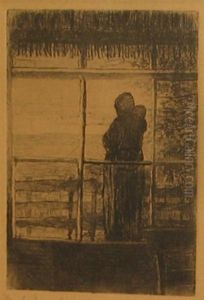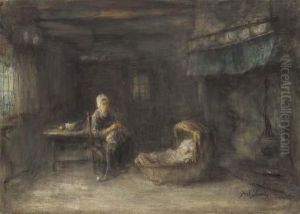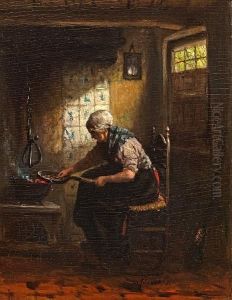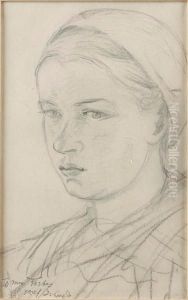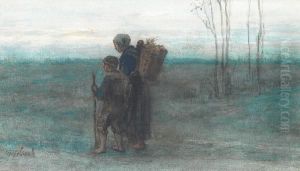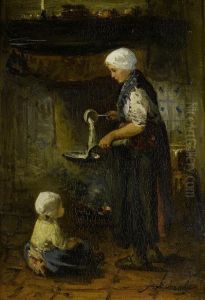Josef Isaels Paintings
Josef Israëls was a Dutch painter, born on January 27, 1824, in Groningen, Netherlands, and died on August 12, 1911, in The Hague. He is often considered one of the most respected and influential Dutch artists of the 19th century, and his work is a hallmark of the Hague School. His early education was not in art; instead, he initially studied law, a common path for young men of his era. However, his passion for painting led him to abandon his legal studies and dedicate himself fully to art. He studied in Amsterdam and then in Paris, where he was influenced by the works of Rembrandt and the French Realists, which helped shape his mature style.
Israëls' work primarily focuses on the lives of fishermen and peasants, depicting their struggles and moments of happiness with a profound sense of empathy and humanity. His most celebrated pieces often portray the harsh realities of life in a manner that is both poignant and dignified, earning him the nickname 'the Dutch Millet,' after the French Realist painter Jean-François Millet. Israëls' use of color, light, and composition brought a depth of emotion and realism to his subjects that was ahead of his time, making his work resonate with audiences and critics alike.
Throughout his career, Josef Israëls received considerable acclaim, both in the Netherlands and internationally. He played a significant role in the Hague School, a movement that sought to portray the Dutch landscape and the lives of its people with a new level of realism and emotional depth. His influence extended beyond his own works, as he was a mentor to many younger artists, helping to guide the direction of Dutch art in the late 19th and early 20th centuries. Israëls' legacy is not just in his paintings but also in his contribution to the development of modern Dutch art, making him a pivotal figure in the history of European art.
